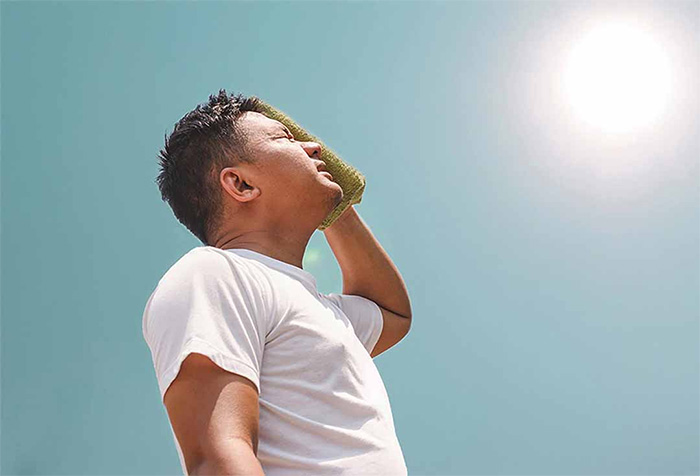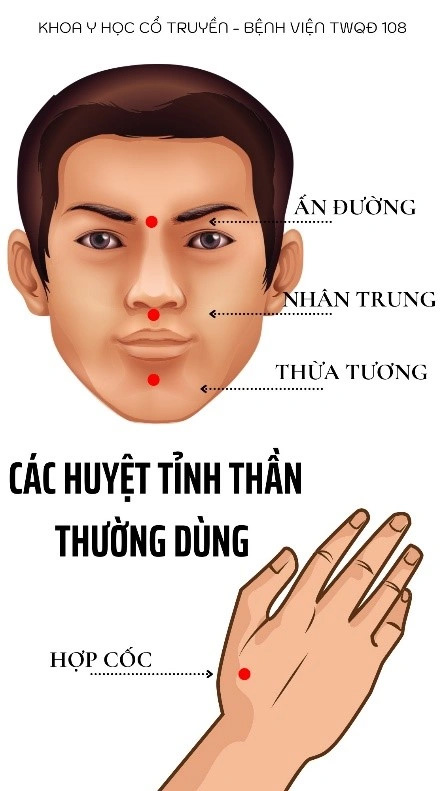Standing before a patient suffering from heatstroke with temperatures reaching 39-40 degrees Celsius in Northern Vietnam, proper first aid can save their life in a critical situation.
As Northern Vietnam enters summer, experts agree that higher temperatures increase the risk of heatstroke and heat exhaustion. This condition is considered a constant threat for all ages and demographics. In some emergency cases, this condition can even lead to death if not handled promptly.
Proper First Aid
According to Dr. Nguyen Thi Mai Phuong from the Traditional Medicine Department at the Central Military Hospital 108, heatstroke and heat exhaustion fall under the category of “heat injury” from the perspective of traditional medicine.

Extreme weather increases the risk of heat exhaustion and heatstroke for all ages. (Illustrative image)
This means that the patient is experiencing heat exposure, showing symptoms such as:
- Fever, elevated body temperature, hot skin, either not sweating or sweating profusely with cold sweat.
- Increased heart rate, rapid breathing, palpitations.
- Fatigue, dizziness, headaches.
- Excessive thirst, dry mouth and throat.
- Red eyes, red tongue, flushed face, rapid and weak pulse.
- Dark yellow urine, reduced urine output.
In severe cases, the patient may faint, go into a coma, experience cardiovascular collapse, or suffer from heat shock leading to death.
Dr. Phuong emphasizes that in these moments, immediate first aid before medical personnel arrive is crucial and can save the patient’s life.
Specifically, the expert advises that bystanders should quickly take action to lower the patient’s body temperature.
“Some simple ways to reduce body temperature include moving the patient to a cool, shaded area; loosening or removing some clothing; using a damp, cool cloth to wipe or apply to areas such as the forehead, neck, armpits, and groin,” Dr. Phuong suggests.
In addition, those nearby should quickly provide fluids to the patient if they are still conscious and not experiencing severe vomiting. At the same time, call for medical assistance to transport the patient to the nearest healthcare facility.
However, in these situations, medical personnel may not be able to arrive immediately while the patient is in critical condition. Therefore, if the patient has fainted, in addition to the aforementioned first aid methods, Dr. Phuong suggests that we can stimulate certain acupressure points to help revive them while waiting for medical personnel.
Acupressure points include:
- Ren Zhong Point: Located one-third of the way up the philtrum.
- Cheng Jiang Point: The depression below the lower lip.
- He Gu Point: The webbing between the thumb and index finger.
- Yin Tang Point: The midpoint between the two eyebrows.

Acupressure points for first aid in heatstroke and heat exhaustion. (Image: Provided by the hospital).
Preventing Heatstroke with Simple Actions
While these measures are effective for first aid, individuals suffering from heatstroke and heat exhaustion still face certain risks if not treated promptly. Therefore, preventing “heat injury” from the start is essential.
According to Dr. Nguyen Thi Mai Phuong, in the harsh weather conditions currently in Northern Vietnam, everyone should pay attention to staying hydrated, especially on peak hot days.
“In addition to necessary actions, we should also limit outdoor activities during these days. When going outside, everyone must wear protective clothing, use hats, sun umbrellas, and sunglasses,” the expert advises.
Moreover, people should avoid prolonged exposure to the sun, hot environments, or excessive physical activity during this weather.
Dr. Phuong emphasizes that when returning from the hot outdoors, if the body is still hot and sweating profusely, one must absolutely avoid cold showers, washing hair, pouring cold water over the head, or using excessively cold air conditioning or fans directed straight at the body.
The expert suggests enhancing nutrition during the summer with cooling vegetables such as winter melon, tomatoes, mung beans, loofah, cucumbers, amaranth, and water spinach.
Additionally, the doctor recommends some herbal remedies that help dispel heat, relieve thirst, and generate fluids, such as:
- Fresh pennywort: Clean, soak in salt water, then pound or blend to extract the juice for drinking.
- Fresh lotus leaves: Clean, blend or pound with a little salt, and extract the juice for drinking.
- Fresh basil leaves: Clean, pound with a little salt, boil, cool, strain, and drink the liquid.
- Watermelon: Clean the rind, boil water to cool and drink, or extract the juice from the watermelon flesh.
- Bitter melon: Remove the seeds, slice thinly, boil, cool, and drink.
First Aid and Prevention of Heatstroke


















































